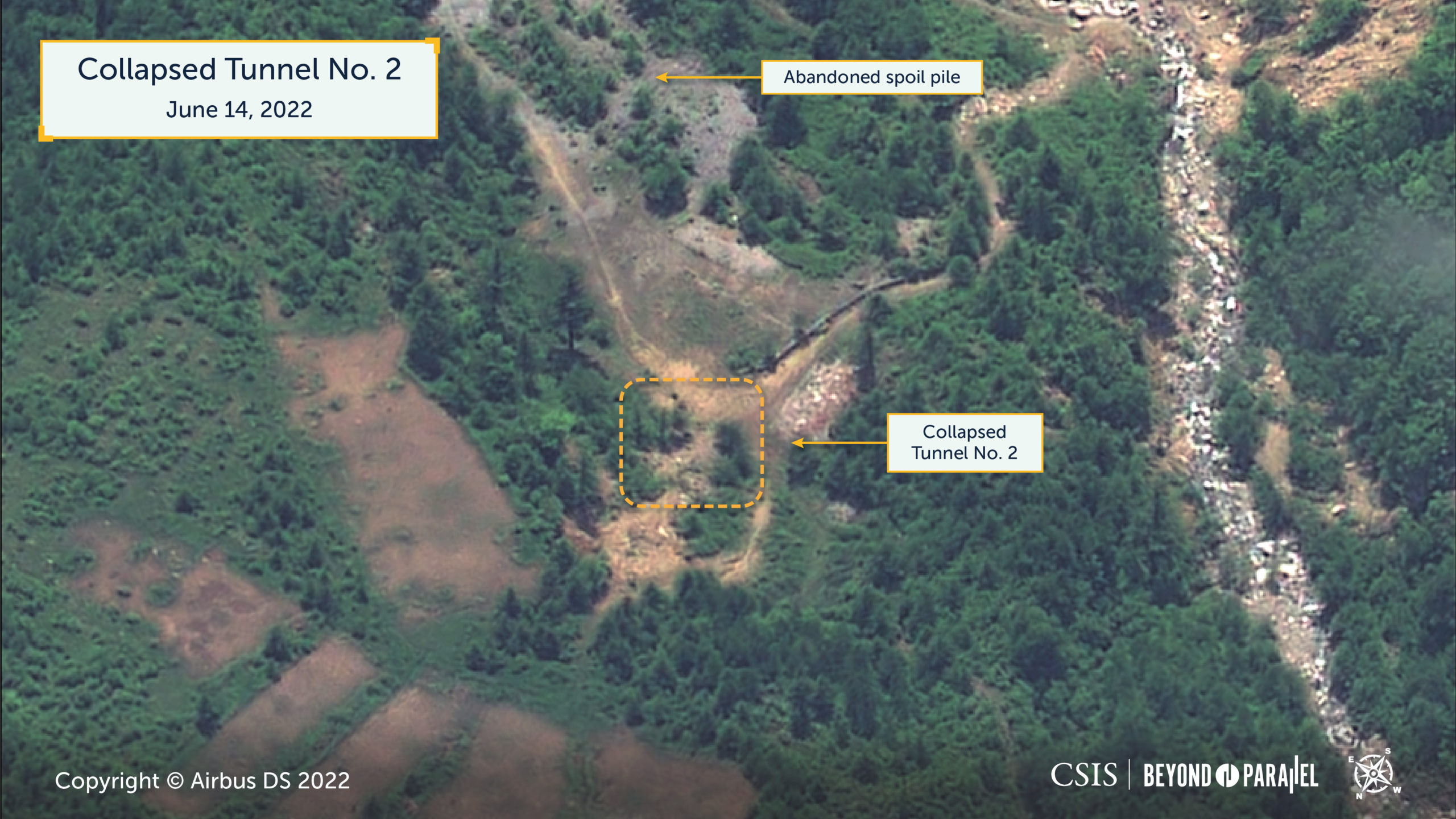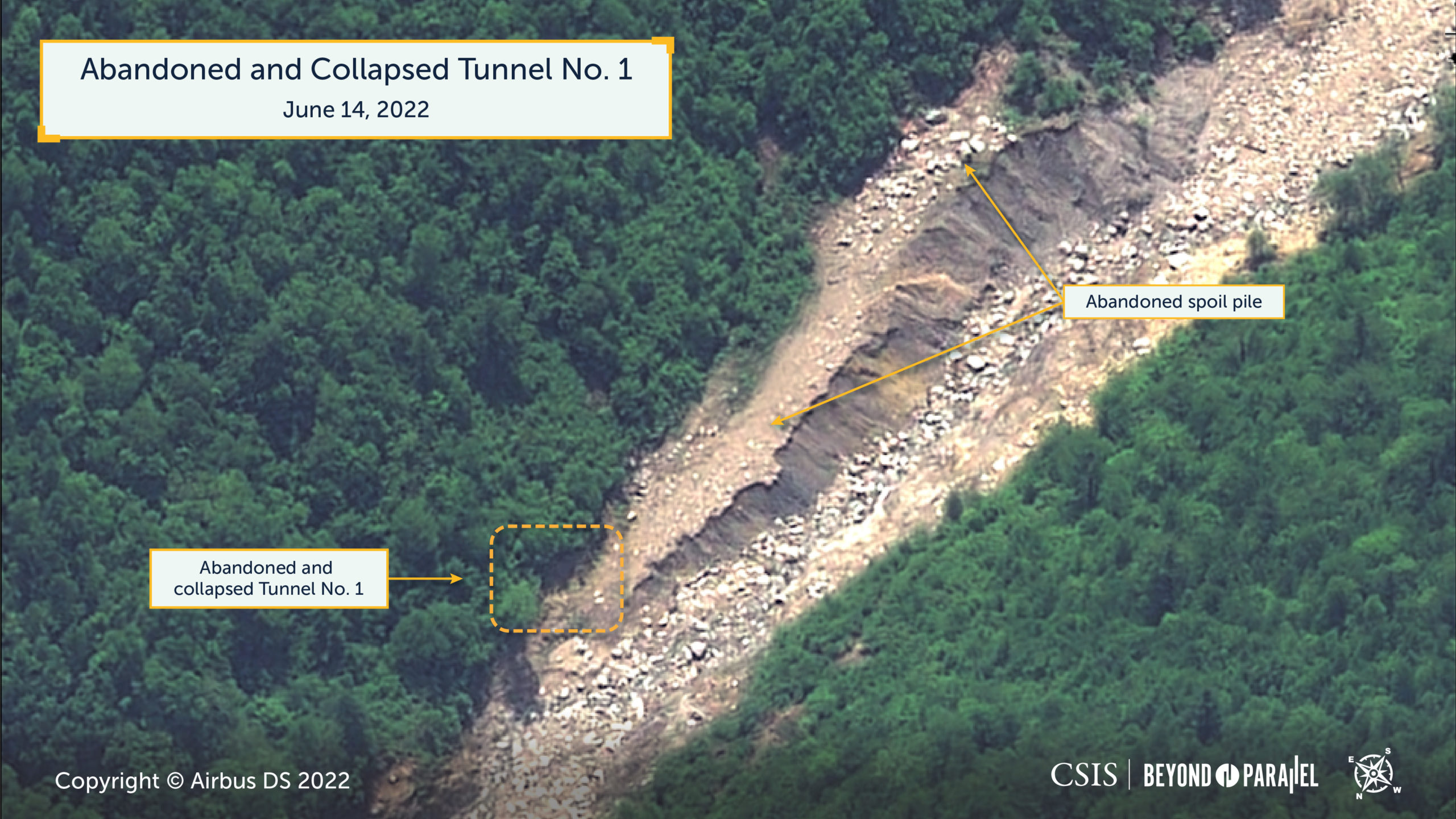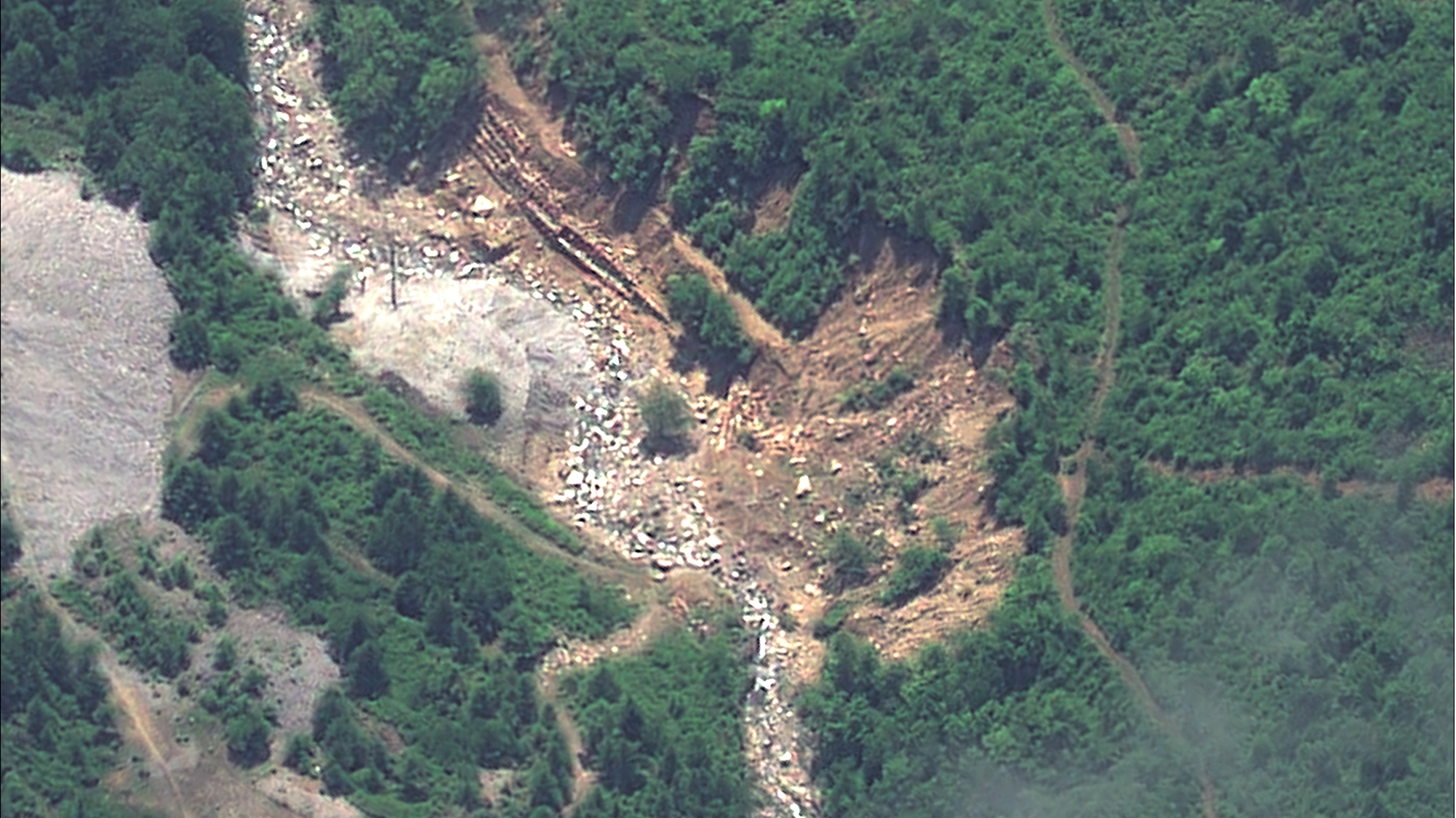
New Activity at Punggye-ri Tunnel No. 4
This post was updated on June 27, 2021, to take into account additional imagery analysis of Tunnel No. 4.
Key Findings
- Satellite imagery acquired on June 14, 2022, provides an update on the observable activity of the Punggye-ri Nuclear Test Facility and its portals.
- The refurbishment work and preparations at Tunnel No. 3, which began approximately four months ago, are apparently now complete and ready for an oft-speculated seventh nuclear test.
- New construction activity is noted at Tunnel No. 4, strongly suggesting an effort to reenable it for potential future testing.
- Supporting an effort to further reenable the facility, construction of new buildings or updates to existing buildings is observed in the main administration.
- The timing of a seventh nuclear test now rests solely within the hands of Kim Jong-un.
An Airbus Pleiades Neo image of the Punggye-ri Nuclear Test Facility collected on June 14, 2022, provides an opportunity to update observable activity at the north section of the facility and its portals. The image shows minor new activity at Tunnel No. 3 (also known as the South Portal), indicating that the refurbishment and construction work during the past four months is essentially complete, and the tunnel is now ready for the oft-speculated seventh nuclear test. Significantly, new construction activity is observed at Tunnel No. 4 (West Portal), indicating an expanding effort to reenable the facility.
On June 13, 2022, a day prior to the image collection, South Korean Minister of Foreign Affairs Jin Park stated “It is being observed that preparations for a nuclear test are completed, so now only a political decision remains.” Separately, an official from the Ministry of Unification stated that “North Korea is currently prepared to conduct a nuclear test at any time in case Chairman Kim Jong-un decides to do so.”
Tunnel No. 3

No significant activity (e.g., truck, personnel, etc.) is observed in the satellite image in the immediate area of the new portal for Tunnel No. 3. What was previously believed to be a probable worksite manager and engineering office is now more accurately identified a vehicle or equipment shed. On the east side of the access road, to the south, the open-air lumber mill shows some minor changes to the lumber piles and logs.
A close-up view of the portal area shows the actual concrete portal with an adjacent caisson retaining wall and some minor landscaping with small trees or bushes—likely in anticipation of a visit by senior officials. It is unclear if what has previously been identified as cables and hoses running from a probable compressor and pumphouse building to the portal remain in place, or if what is currently visible are simply shadows from low retaining walls.
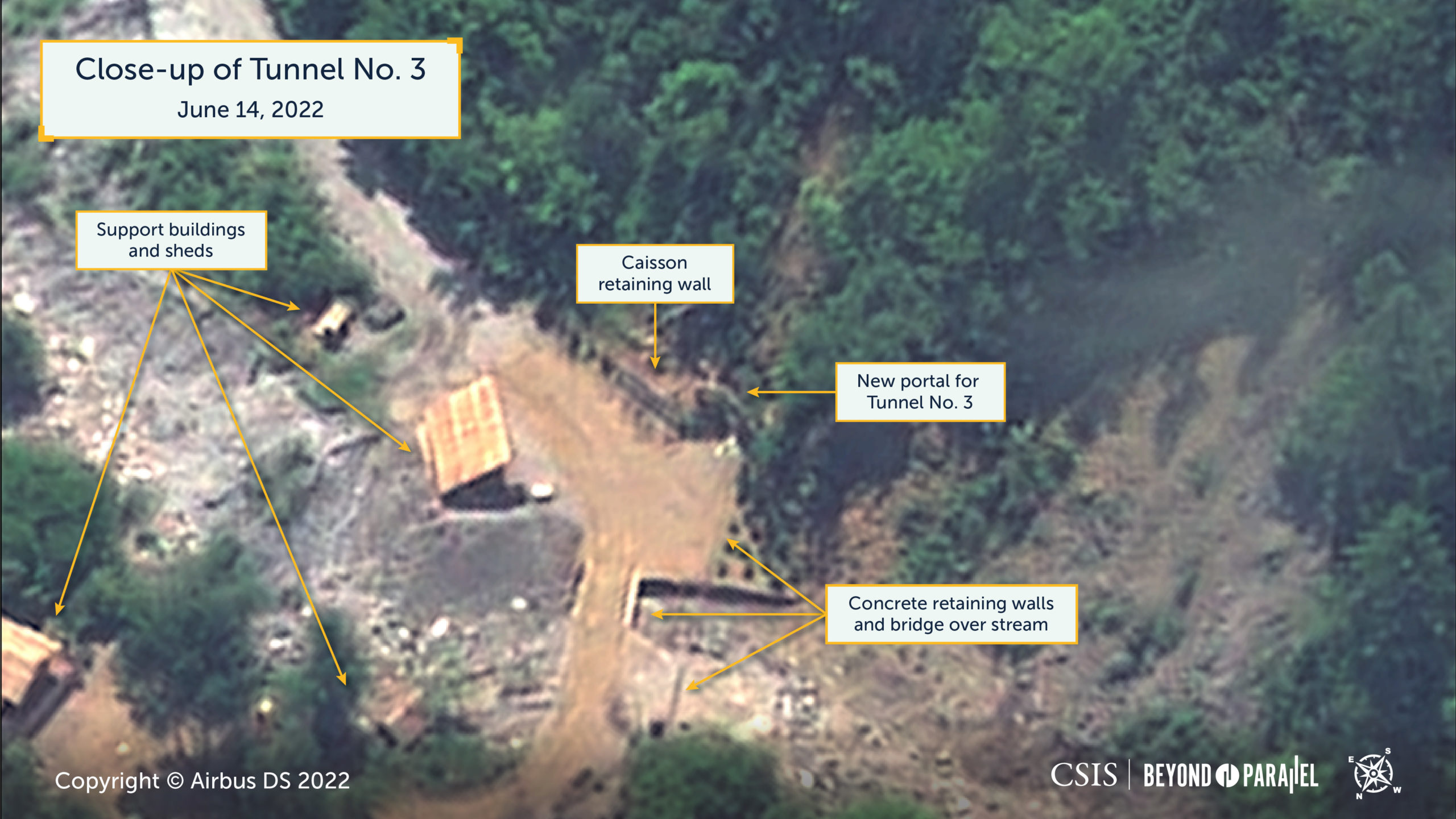
New Activity at Tunnel No. 4
Compared to the May 17, 2022, image in our previous report, the most recent image shows new indications of activity below the entrance to Tunnel No. 4 (West Portal). A new caisson wall under construction and construction materials are observed near the entrance to the portal, which was previously collapsed during disabling in 2018. The extent of actual damage inside the tunnels due to the disabling was unclear, and these new indicators of activity suggest that the disabling was not complete, as is the case with Tunnel No. 3.
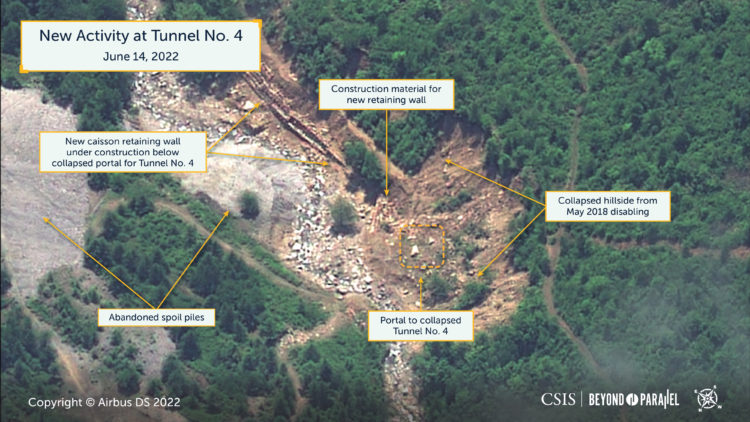
Main Administration and Support Area

Ongoing activity in the main administration and support area is observed in the latest image. Former support and storage buildings continue to be renovated, and several new buildings are under construction—an indicator of the further re-enabling of the facility at Tunnel No. 4. Vehicle tracks are visible throughout the lower courtyard.
Tunnels No. 1 and No. 2
As with our previous report, the current satellite image shows no indicators of activity at Tunnels No. 1 (East Portal) and No. 2 (North Portal) but offers an updated view of these locations. Tunnel No. 2 shows the hillsides in which they were built to have collapsed to varying degrees as part of the disabling in 2018.
